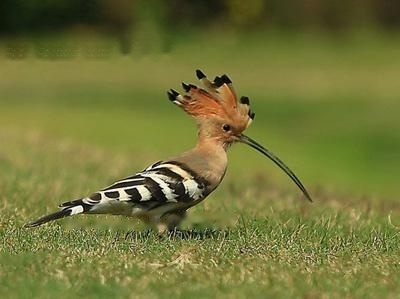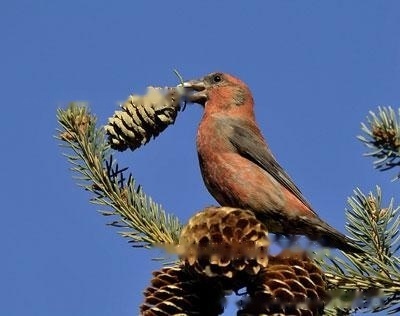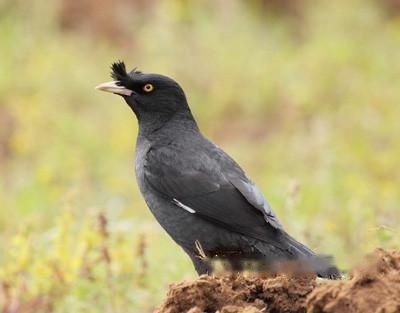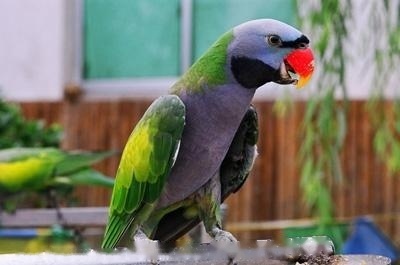Feed
The main food for adult lark is eggs and rice. In addition to the main feed, larks also require supplementary animal feed. The supplementary animal feed for caged lark is very extensive, almost all insects can be fed, among which the most commonly fed are the following: locusts, mealworms, oil gourds, young cicadas, Spiders, as well as mole crickets and pine caterpillar larvae, and more.
Most of the young larks use mung bean noodles as the main feed. Mung bean noodles have high nutritional value. Each hectogram contains 22.1 grams of protein, 59 grams of carbohydrates, 49 mg of calcium, 26.8 mg of phosphorus, 3.2 mg of iron, and 0.22 mg of carotene. Others such as vitamins are also rich in content. Moreover, mung bean noodles are easy to digest, especially according to Chinese medicine, mung bean belongs to yin, which can eliminate fire and stop poisoning. Therefore, mung bean noodles are the most ideal feed for feeding chicks.
What should be paid attention to when raising larks Do not feed the birds unclean food, drink stale water, and do not let the birds and sick birds or those with parasites Birds approaching, do not always keep birds in one place, do not lay unclean sand or damp sand on the bottom of the cage, do not let the lark get rained, do not get too close to other birds when the bird is lit, do not make it nutritious Not comprehensive, don't die of illness, don't keep birds in the house for a long time without fresh air.
Management and tuning
The drinking water tank should be deep and not large, and most of them are semi-cylindrical or inverted pyramid. The flat side is close to the bottom ring of the cage, and food and water are added every 1 or 2 days. The sand at the bottom of the cage should be fine and uniform, keep it clean and dry, and replace it once or twice a week (in summer). Usually, iron wire or bamboo sticks can be used to clip the feces out. Covering is generally not required, but it is required when walking the bird or letting it learn to sing from other birds. In order to make the lark chirping under the lights at night, it should be covered during the day. There are many mosquitoes in the south in summer, so it is necessary to cover it at night to prevent mosquito bites.
For domestication, animal baits such as insect larvae, locusts, and grasshoppers should be fed by hand. In order to cultivate the habit of birds singing on the stage, a cardboard shell ring can be placed outside the ringing platform, slightly higher than the bottom ring of the cage, and the dung stick is often used to poke its feet to let it come on stage, or it is often fed on the ringing platform". Live food".
Cultivating lark calls can be hard work. The fluff of the young bird is gone. The throat of the male bird is often agitated, making a small dripping sound. (commonly known as "zipper"). It's time to let it learn to call. It is easiest to use a successful old bird "bring", and you can also go to the natural world to "sip" or ask "teacher bird". Some use the method of playing the recording, but sometimes the sound is distorted and needs to be corrected in the field or by other birds.
Bailing's "calling", China pays attention to "thirteen sets", that is, learn the sounds of thirteen birds, beasts, and insects. However, the content and order of these "thirteen sets" vary from place to place. In the south, caged larks are allowed to have thrushes, but they are taboo in the north. The basic call of the caged lark in the north should have the call of the red (swamp tit), but it is not required in the south. The so-called "thirteen sets of larks" in the north usually start with a sparrow call, a hen quacks, a cat calls, a sand swallow or a swift, a dog bark, a magpie (gray magpie or magpie), red, oil fenugreek (a large crickets), the whistling of kites, the sound of small axles, the ringing of water-tip bells, the great reed warbler, and the ending of tiger shrike.
The above feeding and training methods apply to all larks. If you only want to listen to the tweets, you can raise and train local species.
Feeding of young birds
Most of the larks in domestic cages are artificially fed by capturing young birds from the wild grass. The captured young birds will not eat by themselves, and only after more than 20 days of artificial fine feeding will they peck on their own. The main food is bean noodles and eggs, which need to be carefully processed. The practice is: fry mung beans or peas until half-cooked, grind them into fine noodles, add 6-8 eggs per catty of noodles, mix evenly and dry them, but avoid mold. When feeding the birds, mix an appropriate amount of egg noodles with water and knead them into strips, 1-2 large mouthfuls each time, 6-8 times a day. When the young birds peck, put the prepared paste feed into the food bowl. No water should be given during this time. After 3 months, change to egg rice (usually mix 5 eggs per 500 grams of millet, mix thoroughly, dry in the shade, and then rub it), and give enough water. In order to adapt to the wild habits of the lark, the cage should be covered with 2-3 cm thick fine sand or dry loess, and some insects should be continuously fed to adjust the diet.




